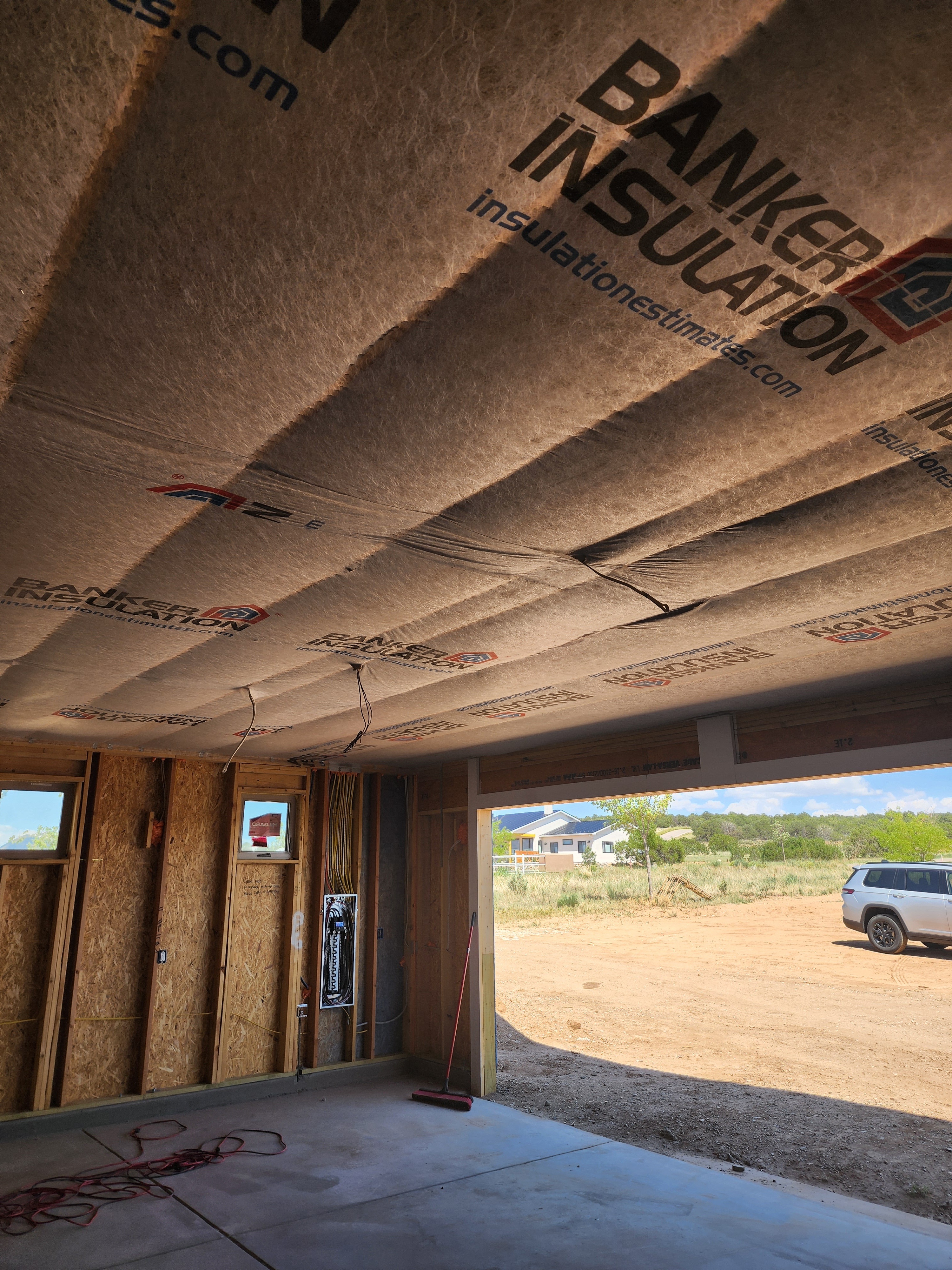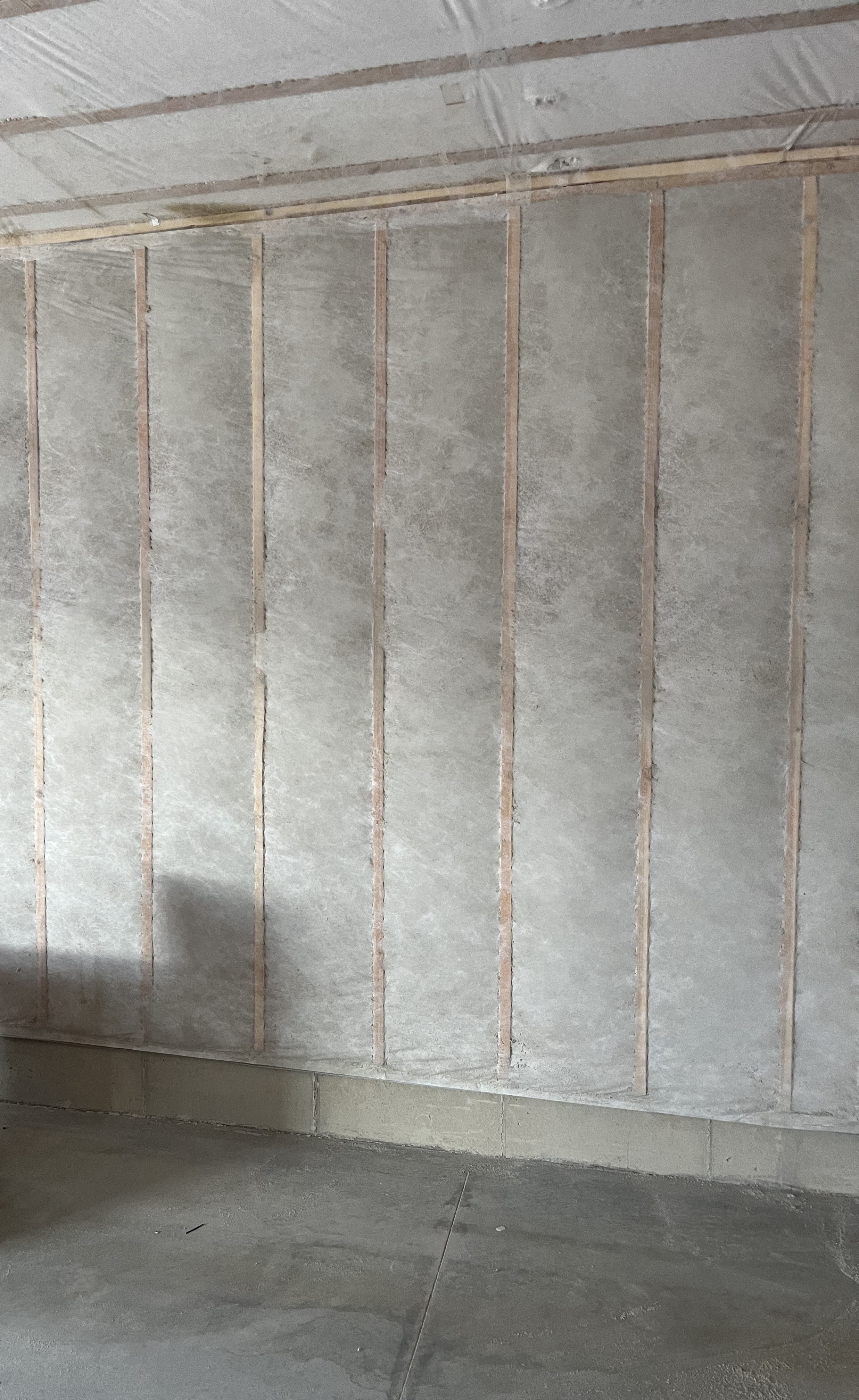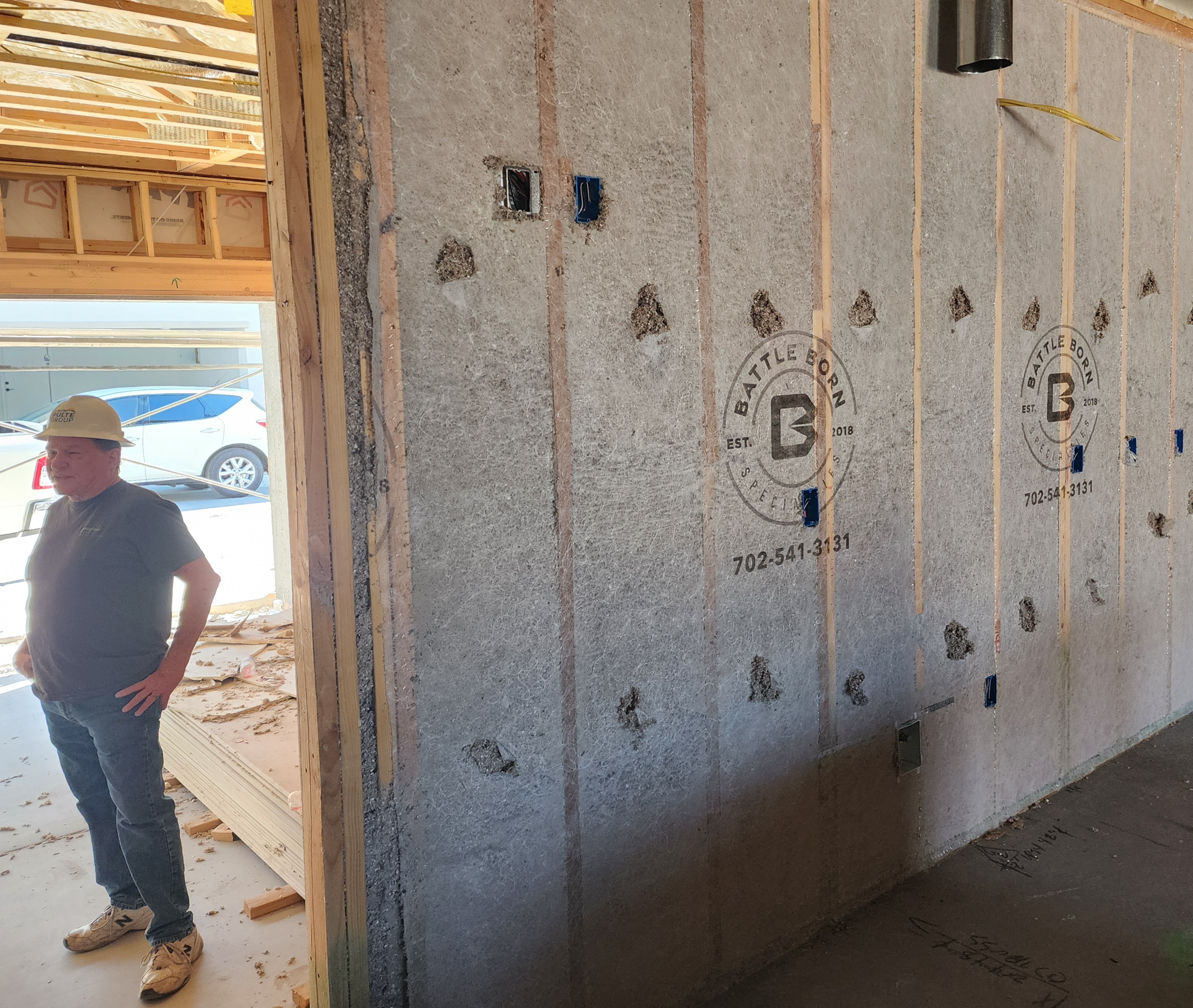
Insulating Your Garage with Cellulose: 8 Questions to Consider
Whether your garage serves as a storage space, a workshop or simply an entryway to your home, investing in insulation pays off in the form of increased comfort and potential savings over time. According to the U.S. Department of Energy, properly insulating spaces such as the garage can notably reduce energy consumption. This is because the right insulation can prevent heat loss in colder months and curb heat gain in warmer months. In turn, insulation not only stabilizes temperatures within the garage but also helps regulate temperature in adjacent living areas, leading to lower utility bills.
Check out our guide to discover the critical role garage insulation plays in optimizing your home’s overall comfort and energy efficiency, eight key considerations, and the advantages of using cellulose insulation.
Why should you insulate your garage?
Each garage is different, and your approach to the insulation process may be too. Perhaps your garage was insulated previously but you’re experiencing a noticeable influx of cold or hot air inside your home whenever you open the door. You may want to turn your garage into an enjoyable living space, such as a home gym or office. Or maybe you have a detached garage and wonder if insulation is really necessary.
Contemplating whether to insulate the garage is a thoughtful consideration for homeowners aiming to enhance comfort and energy efficiency. SANCTUARY® by Greenfiber, made from recycled paper fiber, offers compelling advantages that can contribute to these goals.
If you’re on the fence, consider that, in addition to improved comfort and energy efficiency, upgrading to cellulose insulation can help:
- Protect garage-stored items from extreme temperatures and humidity outside
- Minimize noise from both inside and outside the garage and reduce sound power by up to 60%1
- Reduce heating and cooling costs by lowering temperature differences between the garage and living areas
- Contribute to better indoor air quality by reducing the infiltration of dust, pollutants and outdoor allergens
- Prevent moisture buildup and potential structural damage, preserving the longevity of your home
While installing cellulose insulation can be completed as a DIY project, hiring a professional insulation contractor will help ensure the project gets done efficiently and safely. SANCTUARY Trusted Installers are professionally trained to install SANCTUARY and are committed to answering any questions you have about the installation process.
Questions to Ask Before Starting a Garage Insulation Project
Evaluating existing conditions allows you to identify potential issues. Air leaks, moisture problems and inadequate ventilation can all reduce the effectiveness of insulation. Addressing these matters beforehand ensures that the installation is optimized for efficiency and longevity. Proper preparation also helps identify the right amount of insulation to achieve the desired thermal performance and comfort levels in your garage.
Consider these eight questions to set your project up for success:
1. What type of insulation is used in your garage, if any?
If your garage has finished walls (that is, drywall), it can be difficult to determine what kind of insulation was used. Typically, the type of insulation in your home will be the same as the insulation in your garage. For example, if your home is insulated with fiberglass batts, your garage ceiling and walls will likely be insulated the same way. If your garage is already insulated, a Trusted Installer can evaluate its type and condition, noting any gaps, air leaks or damaged areas.
If your garage has not previously been insulated, your installer will research any local building codes, regulations or necessary permits to identify local regional insulation R-value requirements before proceeding. They will also seal any gaps or cracks to prevent air leakage and maximize the effectiveness of the insulation.
2. Is your garage finished or unfinished?
Although less common in newly built homes with attached garages, unfinished ceilings with exposed wood beams are often found in detached garages. These ceilings allow direct access to the structural elements for installing blow-in insulation. Finished ceilings that already have drywall in place can also be insulated effectively using the Greenfiber dense-pack application.
Similar to walls, garage ceilings that are already finished, meaning there is drywall in place, can have insulation installed using Greenfiber blow-in insulation.
3. Is there a living area above your garage ceiling?
Another important factor to consider is whether there is a living area above the garage ceiling. If so, the ceiling will typically be insulated with batts that are supported by wires or other mechanical devices.
The installation method your Trusted Installer will follow will vary depending on the ceiling structure. If the ceiling has floor trusses above, the insulation will need to be properly secured. In this case, cellulose insulation can often be installed by placing netting directly under the floor and then dense-packing it. If the ceiling is constructed with joists, the ceiling can be netted at the ceiling line and dense-packed.

4. Does your garage currently have drywall?
A common misconception is that you cannot add insulation to a surface that already has drywall. With blow-in cellulose insulation, this is not the case.
For garage walls that already have drywall, using a technique called dense-packing, a Trusted Installer can drill a clean, round hole that is just large enough to fit a small tube. Then, the loose-fill cellulose can be blown into the hole and patched when finished. This is a simple way to install insulation without major construction or disruption of the structure.
If your garage walls are unfinished (no drywall), installing insulation will require a professional with experience and skill in understanding proper installation methods. The installer will staple netting to each wall stud to hold the blown-in cellulose insulation in place. It’s important that the insulation is packed at the correct density to avoid issues when finishing with drywall later.
5. Is your garage attached or detached?
Another primary consideration is whether your garage is attached to your house. Insulating the party wall or floor under a bonus room, which separates the garage from the main living space, is particularly significant for attached garages that connect to high-traffic areas such as hallways or kitchens. Party wall insulation is crucial for improving energy efficiency, especially if there is a room above the garage. In this regard, SANCTUARY serves a dual purpose: It can effectively reduce noise from the garage, including sound from opening and closing doors, while also acting as a barrier against moisture, odors and unwanted airflow.
Even if your garage is detached, insulation is critical. Unlike in attached garages, all walls need to be insulated in a detached garage in order to regulate temperatures independently from the main house. Adding cellulose insulation will enhance the comfort of your detached garage, making it a more pleasant space to work and relax in during both the summer heat and frigid winter months.
6. How old is your garage?
The age of your garage can often affect the efficiency of current insulation as well as the ideal next steps. Many older garages have never been insulated, and if they have, the insulation is often no longer in good condition. In many cases, cellulose insulation retrofit is ideal to fill in the gaps and deterioration that develop over time to provide even coverage. In older homes, adding insulation can increase the overall property value and ensure compliance with building codes.
In newer homes, most builders insulate at least the garage walls and ceilings that are attached to interior living spaces. However, if a space hasn’t had an insulation or air-sealing upgrade in over 10 years, installers typically recommend using retrofit to refresh the insulation and increase efficiency.
7. What climate do you live in?
The amount of heat exposure your home experiences can be significantly influenced by its location and climate. In areas that experience high temperatures and require more cooling, cellulose insulation can be used to slow down the movement of heat entering the home through walls, ceilings and floors. Similarly, in areas with cold climates, insulation can help prevent cold air from entering the house. This can reduce heating costs, improve the overall comfort of the home and prevent frozen pipes.
8. What is the intended purpose of your garage?
The National Association of Realtors notes a rising trend in converting garages into versatile living spaces. Installers typically inquire about the intended use of the garage, such as:
- Home gyms
- Workshops
- Offices
- Utility and storage areas
If you plan to spend considerable time in your garage or use it as a living space, cellulose insulation is a suitable choice since it is designed to improve overall comfort and temperature regulation. On the other hand, if your garage is strictly used for vehicle storage, insulating the walls may be less critical. However, choosing to insulate will help protect your vehicle from extreme heat and cold.

Ready to insulate your garage with cellulose?
Garage insulation can result in a more thermally regulated and comfortable home, with better noise and humidity control. Ready to assess the condition of your current garage to determine whether SANCTUARY is right for your home? Visit here to find your closest Trusted Installer.
Frequently Asked Questions About Insulating Your Garage
Explore our FAQ section below for valuable insights into important considerations when insulating your garage.
Are all garages insulated?
Not all garages are insulated. Factors such as geographic location, the purpose and age of the garage, and building codes and construction design determine whether insulation is needed.
What is the recommended R-value for garage insulation?
R-value measures how effective building insulation reduces heat flow into and out of the home. Higher R-values indicate better insulation performance. The ideal R-value can vary based on factors such as climate and type of insulation; however, a recommended average range is typically between R-13 and R-21.
Do you need a vapor barrier when insulating a garage?
In most cases, if your garage is heated, a vapor barrier is recommended to help prevent frost and mold. Keep in mind that if your garage is heated, it’s recommended to use a vapor barrier paint, which is designed to limit moisture transmission through walls, ceilings and other surfaces. Learn more about vapor barriers and how cellulose manages moisture.
1 In field testing on identical 2-by-4 exterior wall types, Greenfiber® R-13 Stabilized Spray-Applied Insulation outperforms R-15 unfaced fiberglass batts by 4 NIC rating points, which equates to a 60% reduction in sound power. The weak point in the assembly, such as flanking through windows and doors, will diminish the value of the reduction in sound power. Reduction in sound power is achieved through retrofitting, dense-packing or spray-applying Greenfiber into exterior walls (contractor installation is recommended for these applications). See the manufacturer’s installation guide for full details on how to install to meet specifications.
- Category: Installation
